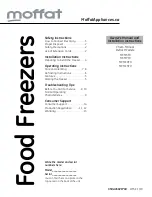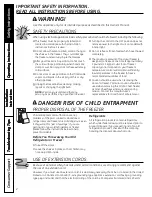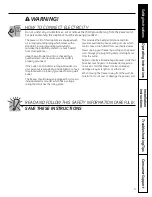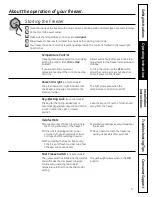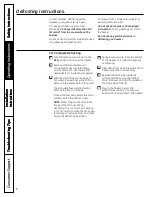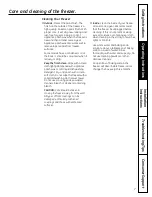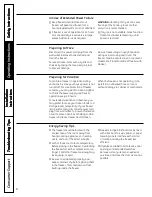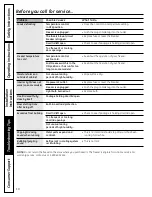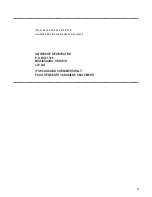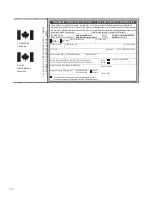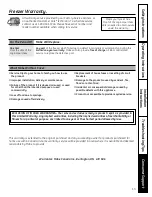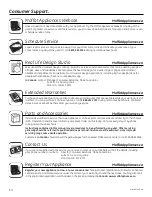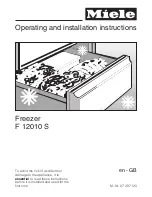
Co
ns
um
er
S
up
po
rt
Tr
ou
bl
es
ho
ot
in
g
Ti
ps
O
pe
ra
tin
g
In
st
ru
ct
io
ns
Sa
fe
ty
In
st
ru
ct
io
ns
In
st
al
la
tio
n
In
st
ru
ct
io
ns
Tr
ou
bl
es
ho
ot
in
g
Ti
ps
In
st
al
la
tio
n
In
st
ru
ct
io
ns
Sa
fe
ty
In
st
ru
ct
io
ns
O
pe
ra
tin
g
In
st
ru
ct
io
ns
Tr
ou
bl
es
ho
ot
in
g
Ti
ps
In
st
al
la
tio
n
In
st
ru
ct
io
ns
Sa
fe
ty
In
st
ru
ct
io
ns
O
pe
ra
tin
g
In
st
ru
ct
io
ns
8
In Case of Extended Power Failure
■
■
Keep freezer door/lid closed. Your
freezer will keep food frozen for 24
hours provided warm air is not admitted.
■
■
If freezer is out of operation for 24 hours
or more, add dry ice. Leave ice in large
pieces. Add more ice as required.
WARNING:
Handling of dry ice can cause
freezing of the hands—gloves or other
protection is recommended.
■
■
If dry ice is not available, move food to a
frozen food locker temporarily—until
power is restored.
Preparing to Move
Disconnect the power cord plug from the
wall outlet. Remove foods, defrost and
clean the freezer.
Secure all loose items such as grille and
shelves by taping them securely in place
to prevent damage.
Be sure freezer stays in upright position
during actual moving and in van. The
freezer must be secured in van to prevent
movement. Protect outside of freezer with
blanket.
Preparing for Vacation
To maintain freezer in operation during
vacations, be sure your house power is not
turned off. For sure protection of freezer
contents, you may want to ask a neighbor
to check the power supply and freezer
operation every 48 hours.
For extended vacations or absences, you
may prefer to move your frozen foods to a
storage locker temporarily. If your freezer
is to be left empty, disconnect power cord
plug from wall outlet. To prevent formation
of odors, place open box of baking soda in
freezer and leave freezer door/lid open.
When the freezer is not operating, it can
be left in an unheated house or room
without damage to cabinet or mechanism.
Energy Saving Tips
■
■
The freezer should be located in the
coolest area of the room, away from
heat producing appliances or heating
ducts, and out of the direct sunlight.
■
■
Let hot foods cool to room temperature
before placing in the freezer. Overloading
the freezer forces the compressor to run
longer. Foods that freeze too slowly may
lose quality, or spoil.
■
■
Be sure to wrap foods properly, and
wipe containers dry before placing them
in the freezer. This cuts down on frost
build-up inside the freezer.
■
■
Freezer storage bin should not be lined
with aluminum foil, wax paper, or paper
toweling. Liners interfere with cold air
circulation, making the freezer less
efficient.
■
■
Organize and label food to reduce door
openings and extended searches.
Remove as many items as needed at
one time, and close the door as soon as
possible.

